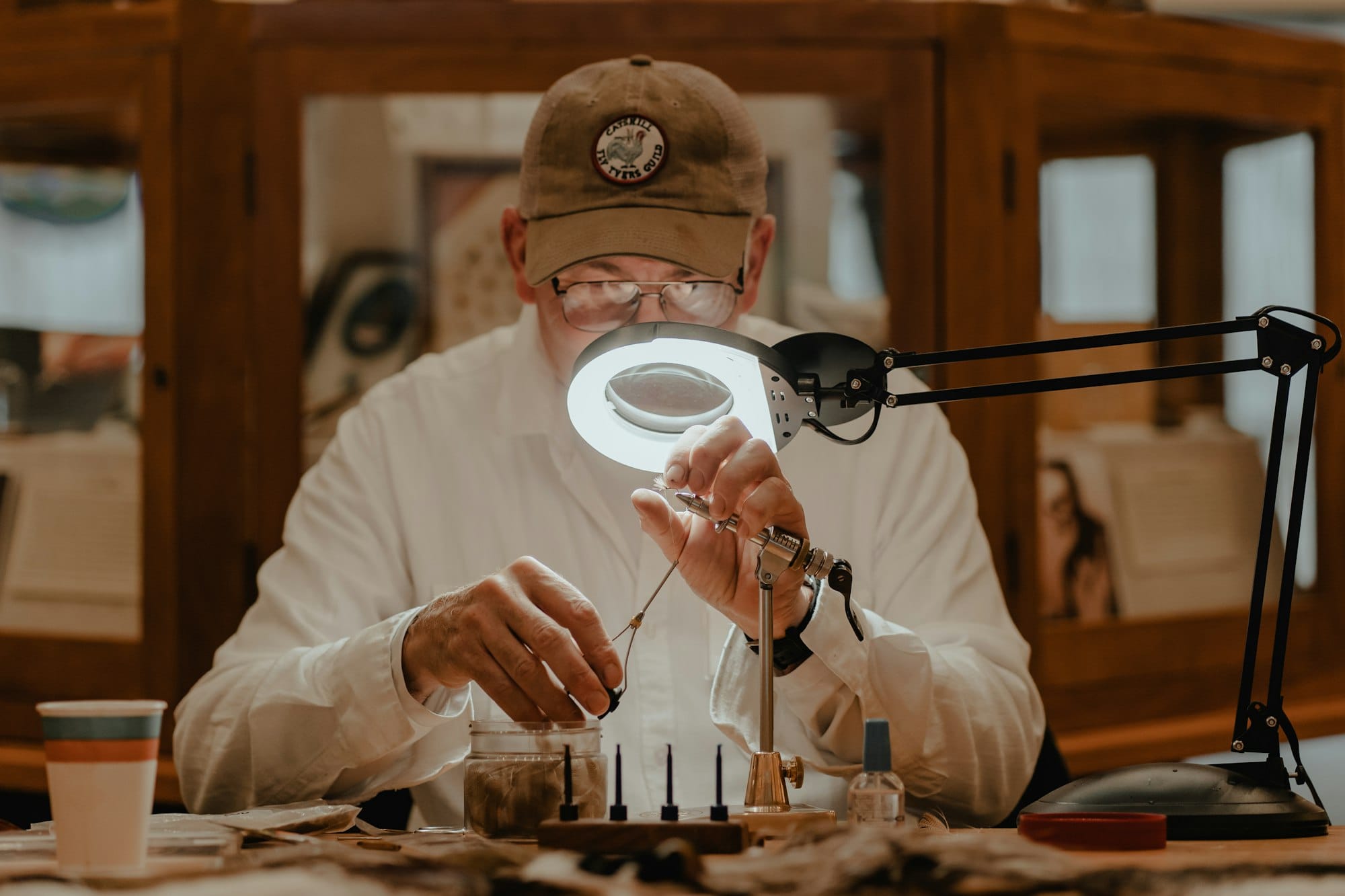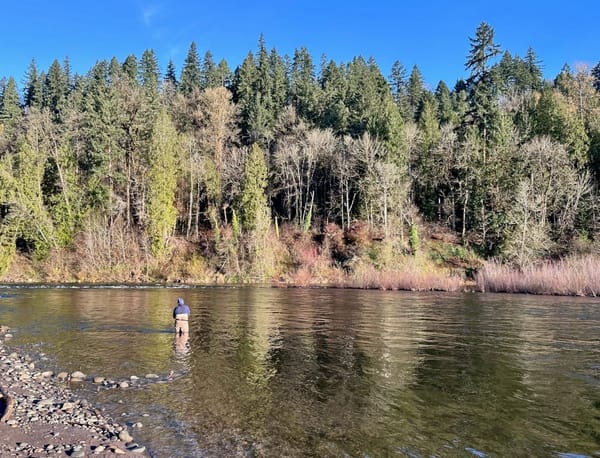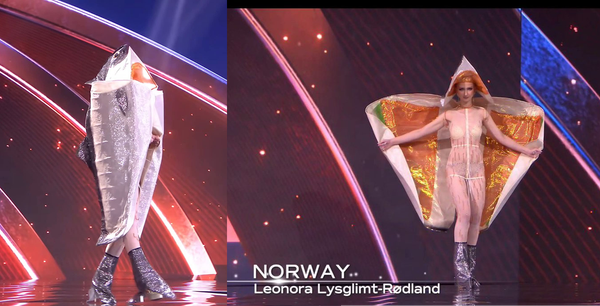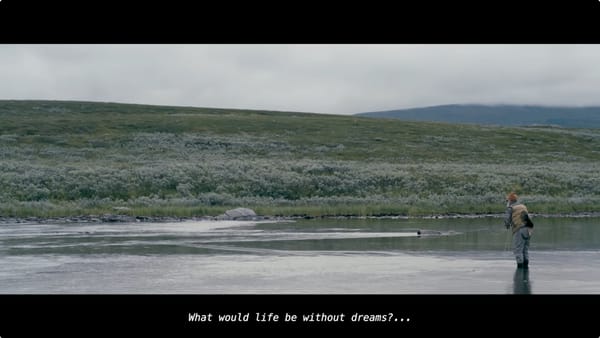CFS Member Projects: Q&A with Chuck Grimmett
On upstate New York streams, tying tenkara flies, fly fishing woodworking projects, functional design, and building your own fly fishing tools
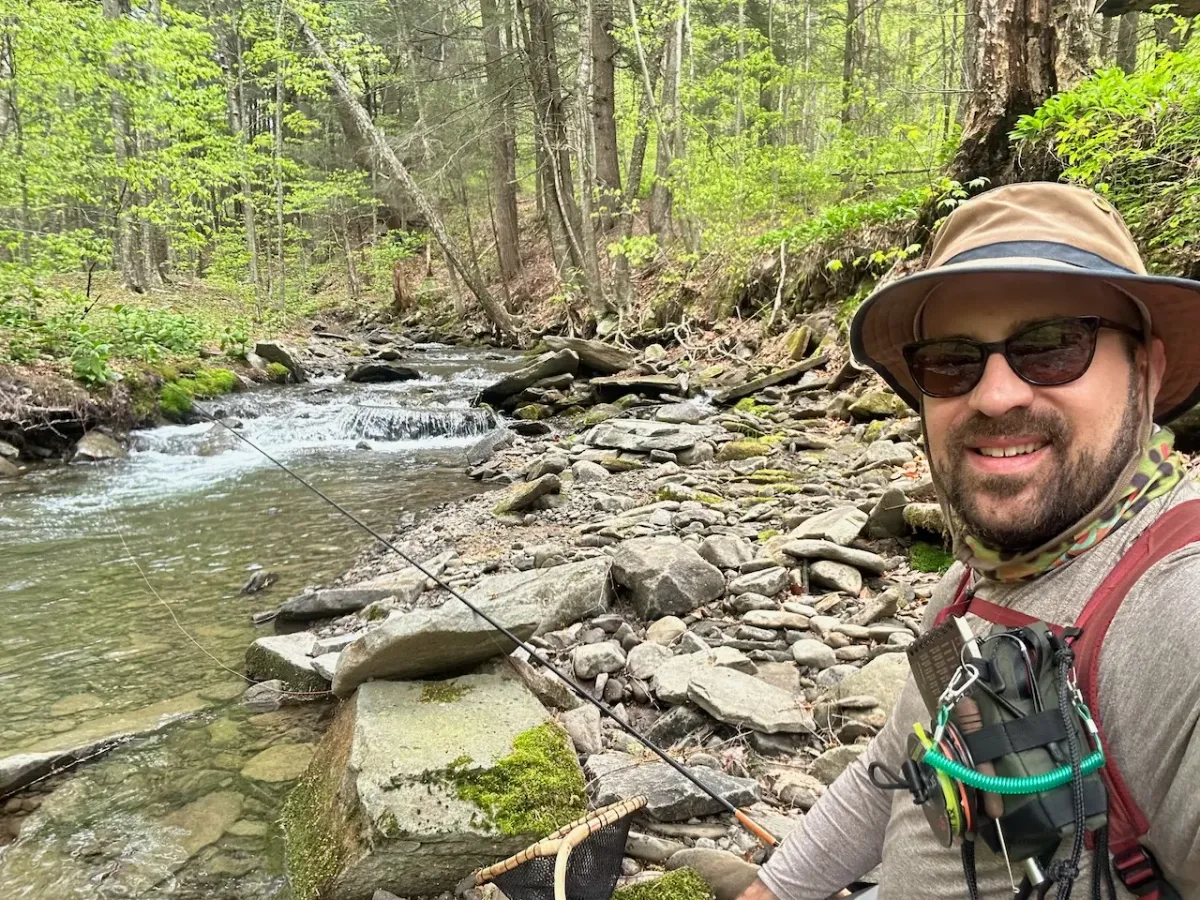
Chuck Grimmett from Peekskill, NY was one of the earliest members at Current Flow State. He's a former colleague of another Nick, my multi-talented video-making buddy. Chuck, too, is multi-talented, and does a great job sharing is his projects with the world. I'm so impressed by his ability to take something he wants to improve, fishing-wise, and devise a functional solution through vision, craft, and precision. I wanted to learn more about how his creative and craft process intersects with his fishing.
We talk a lot around here about how fly fishing is a passion of relationships. Between outdoor ecosystems, between rocks and water, and water and bugs, and bugs and fish. But also between human pursuits. As your experience in the sport grows, you'll find your curiosity and areas of interest start to meld together. Maybe it's bringing your watercolor kit to the side of the river and capturing how the light hits the river just so as it moves over a rock. Maybe it's in working to perfect your casting, and putting in the work to develop artistry in how you present the fly. Maybe it's integrating fly fishing and backpacking or bikepacking and how you explore new zones. For me, it's connecting the passion I have for the written word and how we communicate our love for all these things together, anchored by this one all-encompassing way of living, and finding ways to probe deeper and deeper into what it's all about.
I thought you'd enjoy this trip into Chuck's creative practice, across fly fishing woodworking projects and fly tying, by way of how it influences his fishing, and where it's taking him next.
CFS: Chuck! What do you consider your home waters?
CG: I live in the Croton Watershed, and the various streams in the watershed are my home waters. They're all tailwater streams. So they all get cold water releases coming out of the dams in the Croton Reservoir system. The Croton Reservoir system is what feeds part of the New York City water supply. Most of those reservoirs are owned by the New York City water supply system. And they allow anglers to fish them. Not all the streams have trout in them, but there's a decent number in the system that do. I live about two hours from the good streams in the Catskills. I go over there when I can. But I have to do an overnight trip in order to do that. And at this stage of life, that's a little tough. My wife likes to fly-fish as well, and pre-kids we would take anniversary trips and go out there and fish on the Delaware.
CFS: So, like, when you're talking about, those good streams in the Catskills, you're talking about Esopus Creek, Beaverkill, the Willowemoc, the West Branch, those classic rivers?
CG: Yeah. And there's a lot of smaller brook trout streams as well. I really enjoy fishing for brook trout, so I try to look at public lands and see where I can find much smaller streams, which is something that we're lacking here in the Croton system. There are two streams in the Croton system that I found brook trout in, but they're the exception around here. It's almost completely brown trout. Some rainbow as well, but mostly brown.
CFS: What is your home fly shop? What's the closest fly shop to you, or the place that you choose to patronize?
CG: Angler's Den is where I typically go, and that's in Pawling. So that's about, a 40-minute drive from here. One cool thing about Angler's Den is that the current owner, took it over from his father, but his father took over a classic fly shop that had a focus on English wet flies. And so they have an incredible amount of old stock, like, stuff that you can't really find anywhere anymore, even on eBay. If I'm looking for something specific, I can email him.
CFS: Do you have a home club or a club that you meet with or fish with?
CG: Yeah, in fact, I'm going to a fly-tying meetup tonight. It's just the Trout Unlimited Croton Watershed chapter. We have regular monthly meetings, and in the spring and the fall we have fly tying nights.
CFS: I also noticed you're running a kebari exchange with the Tenkara Angler. How did you get into doing the fly exchange?
CG: I noticed they did it a couple years ago and just offered. I think they've done it three or four times. But I haven't seen it lately. So I've been in contact with Mike, who runs the site, and I just said, "Hey, I'm into tying. If you're thinking about doing this again, I'd be happy to host it." Hosting it is not difficult. I've got a pile of boxes right here with flies in them. Starting in about three weeks, I'll just put sets of 12 together and ship them back out. I mean, it shouldn't take me more than a few hours. I'm interested in seeing what other people like to tie. I have some books. But taking a look at a fly and seeing how it's done is totally different than looking at the pictures.
Fly exchanges like chain letters or tape trading, but for fly tying. Every participant ties up a bunch of flies, say a dozen, and sends them off to the host, and gets a dozen different flies in return.
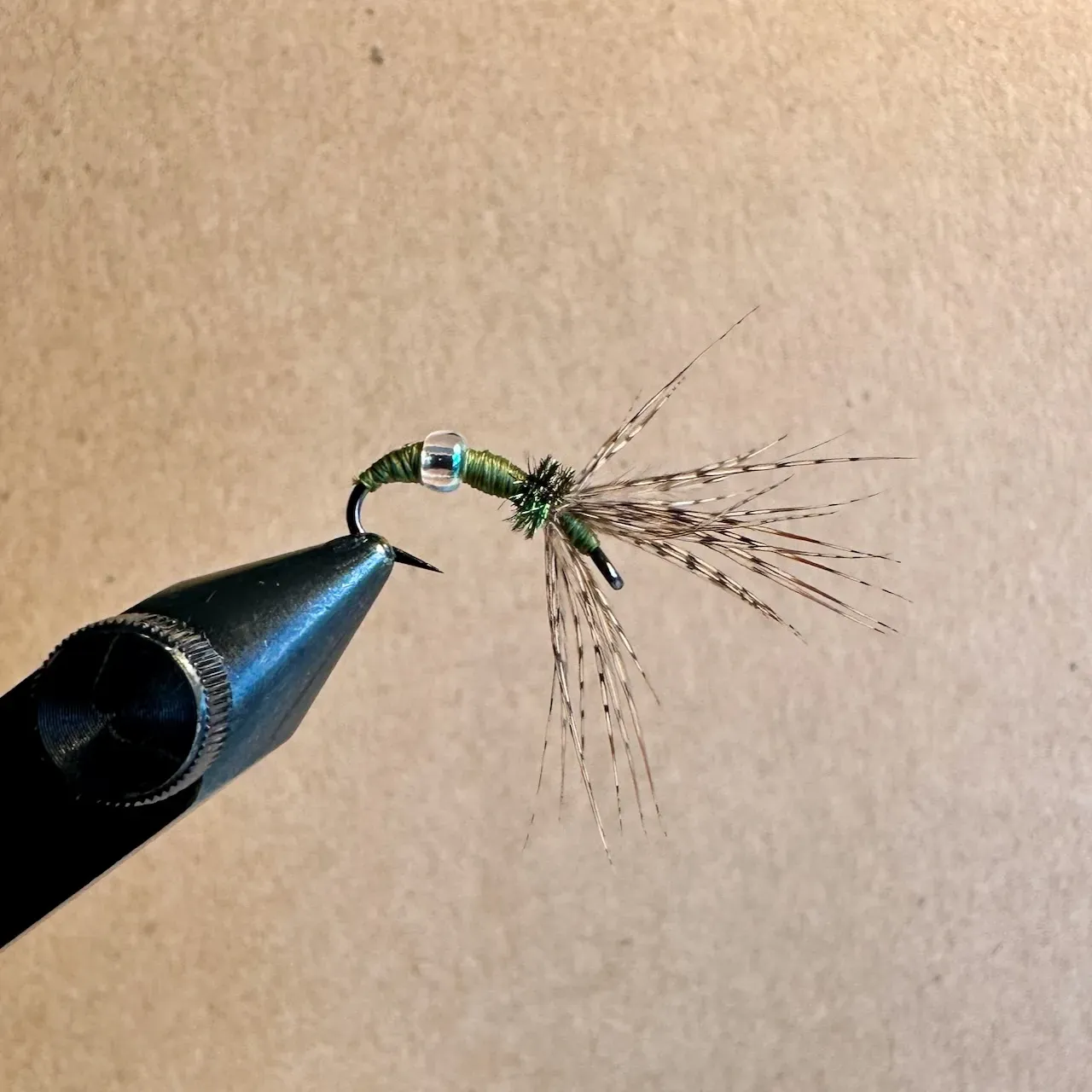
CFS: Do you do a lot of fishing with the tenkara setup? Did you start on tenkara, or did you migrate?
CG: This past year, it's been ninety percent tenkara. Mostly I'm trying to learn it. I did not start out in tenkara. I started out on a traditional western rod with a reel, when I was 13 or 14. And I still use it regularly. I still have a couple of western rods. But I'm trying to learn the tenkara style, and I quite like it. And it's really well suited to the streams here in the Croton Watershed. I wouldn't say it's the best tool for the job on some of the bigger streams in the Catskills. But we don't have the bigger streams over here. One of the things I like is just being able to collapse down that rod when you're walking. I like the simplicity of it.
I don't always use kebari, though. I still use a lot of my Western flies. And I know a lot of tenkara folks do a lot of wet fly fishing. Most of the traditional kebari are all wet flies. But I love dry fly fishing, and it's just as good on the end of a tenkara rod, they work quite well. There's nothing better than seeing a fish come up and take your fly that's floating on top. It's such a rush.
CFS: What is your current favorite tenkara rod? What do you line that with?
CG: I have a 12 foot, Tenkara Bum 36. So, 360 centimeters, and I think I have a 3.5 level line. Roughly the same length of the rod. I have three different lengths of line that I carry with me. But most of the time, in most of the streams, I'm using a line that's an equal length to the rod. And then I just vary the tippet if I need to. Occasionally, I'll go shorter. I also have one of the Zoom rods from Dragontail Tenkara. And that one extends out to three different lengths. So I keep a shorter line if I need to fish the smallest length on that rod. Just because if it's at, like, the 8.5-9 foot length, trying to cast a 12-foot line on that is just a little unwieldy sometimes. So, II'll go down to a shorter length of line on that. But typically, I'm fishing 12 feet line with 3 to 4 feet of tippet. The tippet goes down as you keep re-tying flies, and then you just take it off and put more on. I'm not super particular about measuring it, I just kind eyeball it.
Come tie flies with us! We're hosting a virtual discussion of Patagonia's new fly tying book Pheasant Tail Simplicity and two in-person tying nights, perfect for beginners, in Portland.
We're also giving away a copy of the book to one lucky attendee of our virtual discussion, but you've got to attend to win!
Chuck's fly fishing woodworking projects
CFS: Let's talk about your fly fishing woodworking projects. How do the projects you do that are functional and related to fishing help you stay in touch with fishing?
CG: I love making things, first and foremost. So I try to spend as much time in the wood shop as I can. Getting into the fly tying, for example, I had vise. But it was one of the clamp-on vises, and so I thought, you know, "It would be really great to have a base." I went and looked online, but they were just ugly metal bases. And it's gonna be here in my office, on this other desk all the time. I wanted something that looked a little nicer. So I let that sit in my head for a little while, then walked out in the shop one day and I looked over at this piece of wood, and I was like, "You know what? That one's perfect. That needs to be the base of my vise." It goes like that a lot of times. There's some accessory that I need. I look and see what's out there, get some ideas. And I don't like anything that's out there. So I turn it into a fun project where I'm making something.
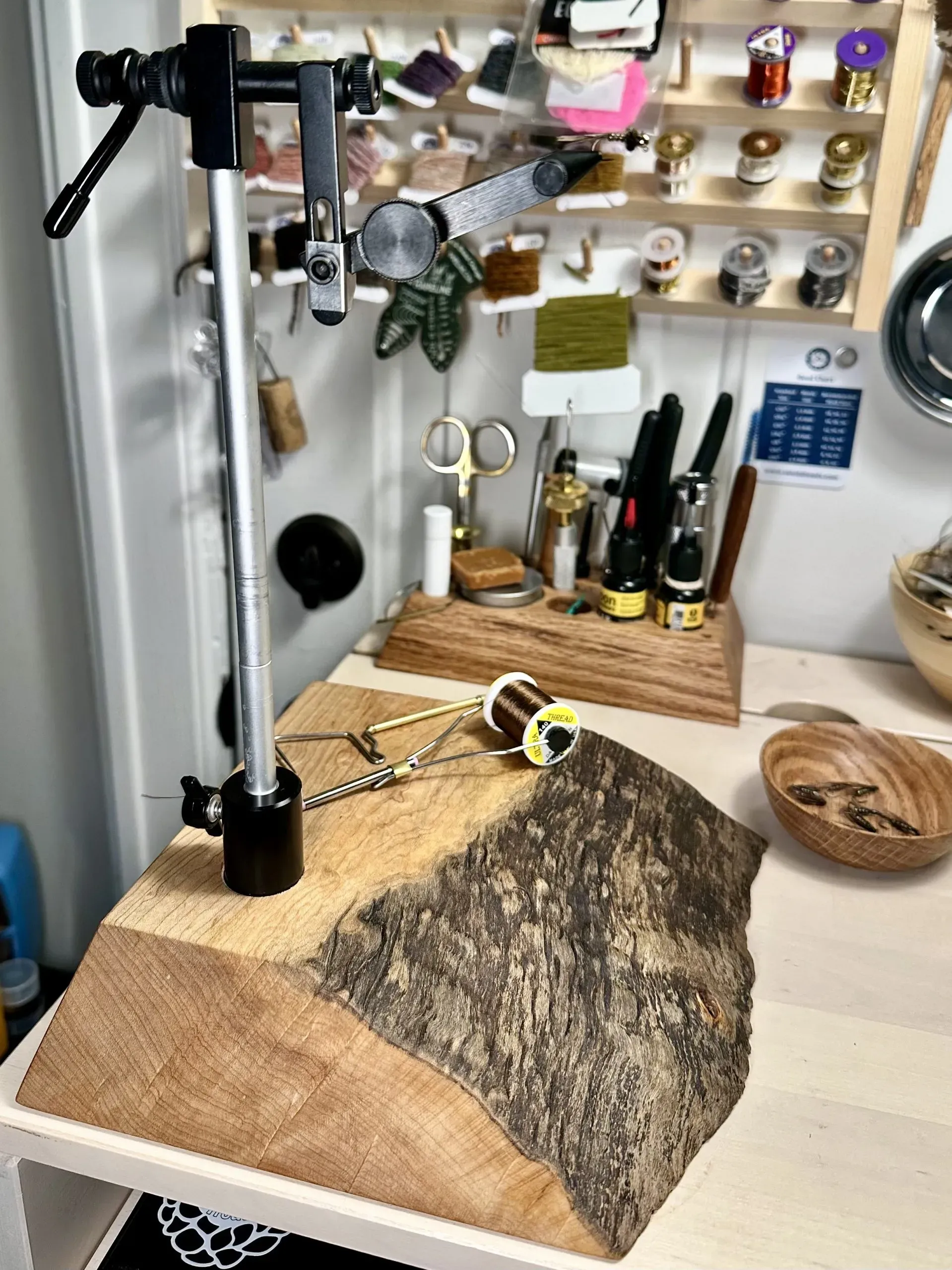
It's not always that there's not something out there that I want. Not everything I make is highly custom. Take for example, the spool that I'm using for the line holder. I had some of those clip-on line holders, but don't really like winding it up parallel with the rod. I like being able to quickly pull the line off and just let it spin off. So, I did have one of the foam ones. It worked fine. I still use it to hold extra lines, but it didn't look beautiful. And if I'm out there using it in nature, I love the beauty. I like the aesthetics of wood. If I didn't turn things on the lathe already, I don't think I would have tried to just carve one by hand. But I looked at it, and it's round. I'm like, "You know what, this would take me thirty minutes on the lathe to make. Why don't I just try it out?" So, I've made four or five of them now. I gave one to my uncle, who introduced me to tenkara. When I have ideas, I tweak them a little over time. The first set, I did not include magnets. And the second set, I was like, "Oh, you know what? These little neodymium magnets would be great." So you can just drop the fly in there, and they stick.
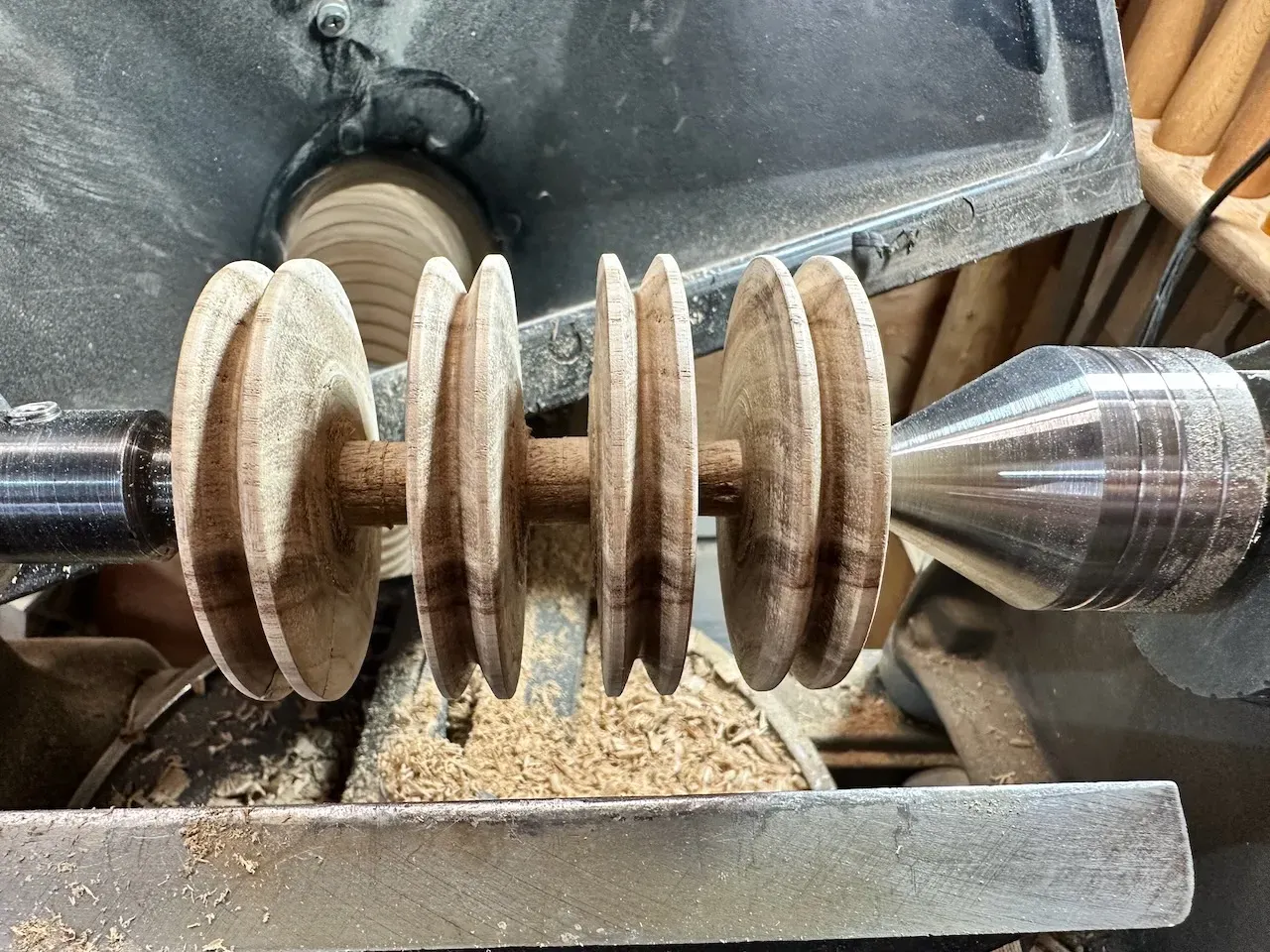
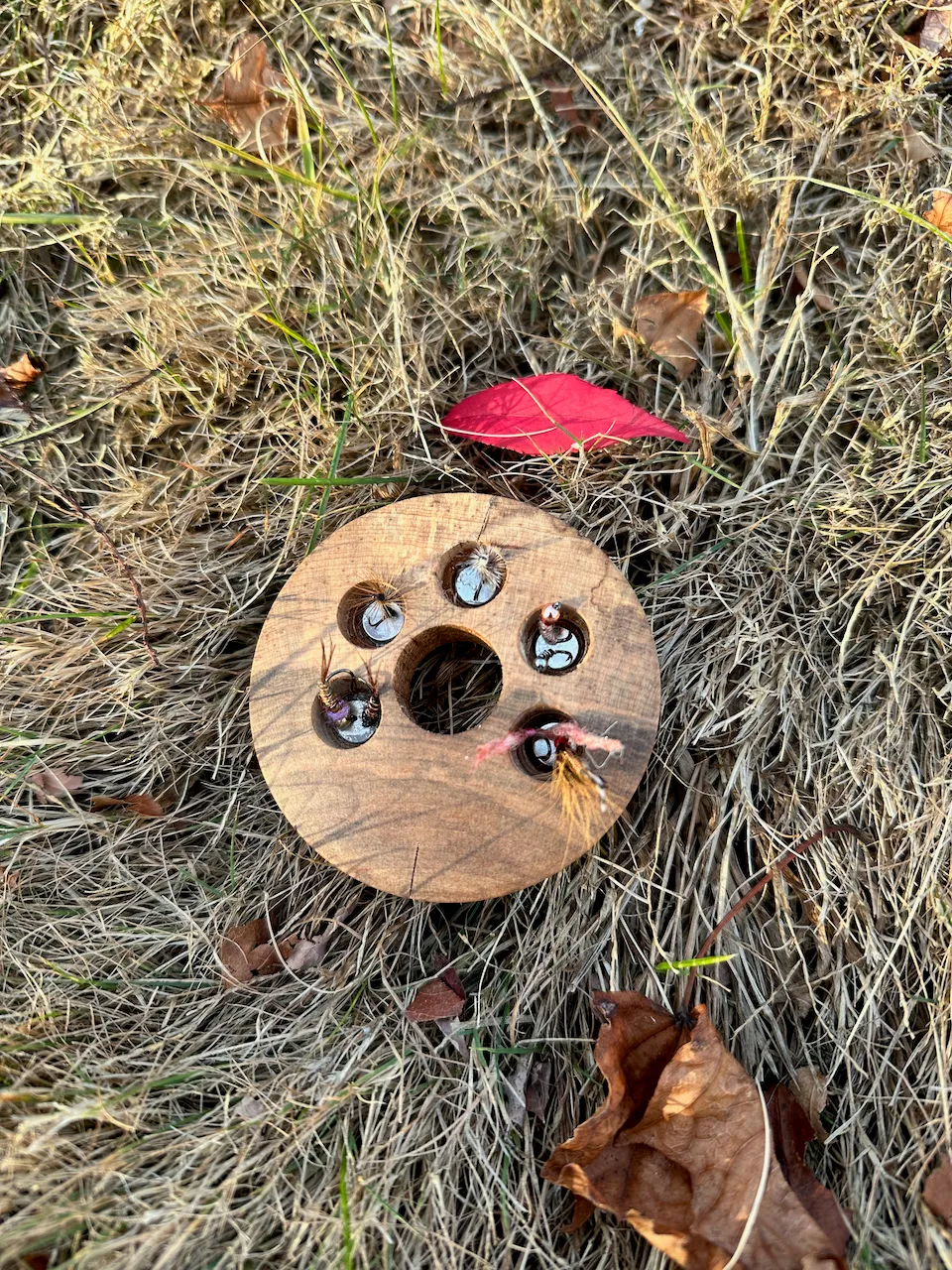
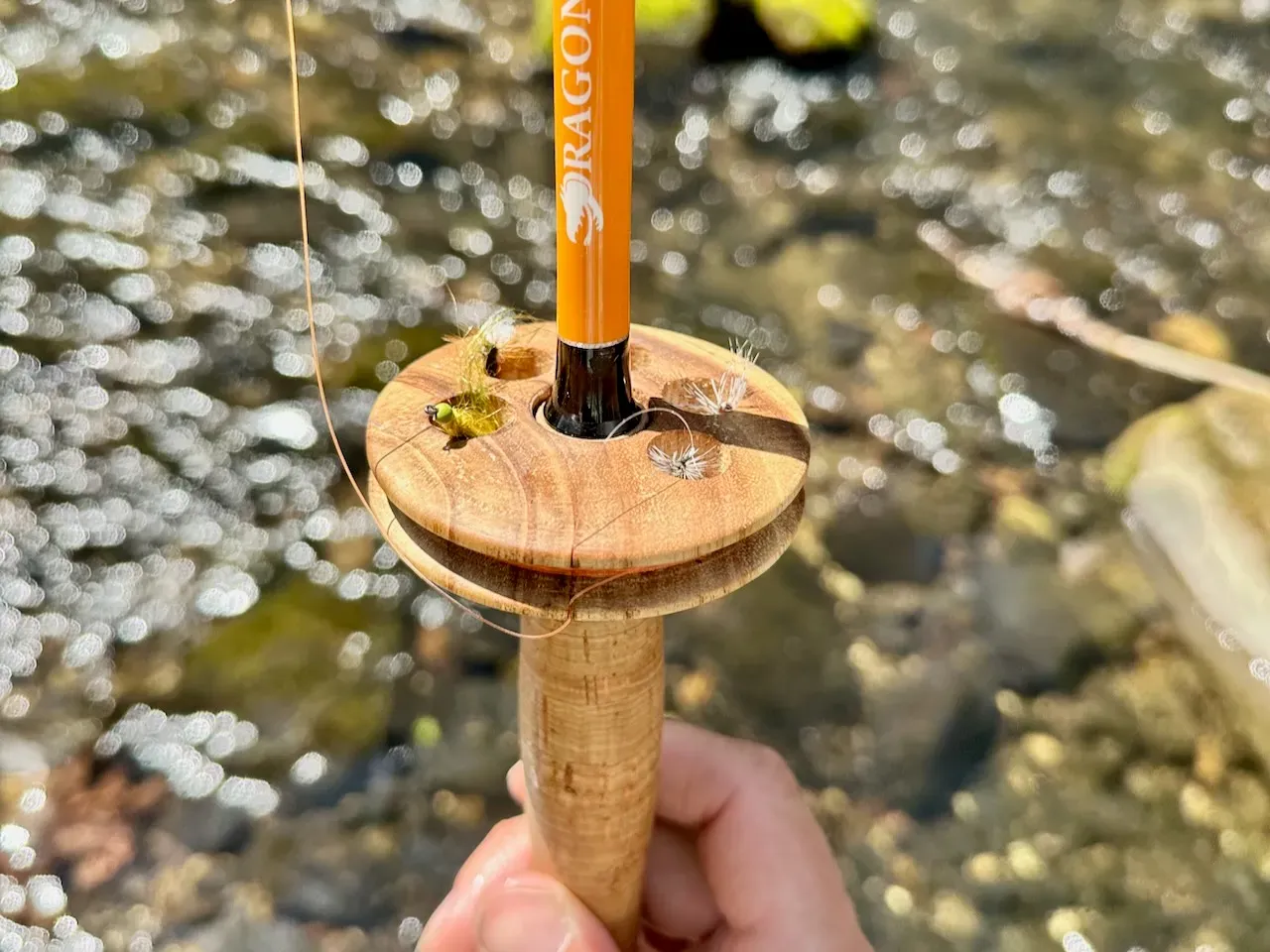
Line spools on the lathe (L) and the finished product
CFS: So with the line holders, you can leave it rigged up, you've got a rigged-up tenkara rod. You can collapse it, you can slide the spool over the lillian with the line attached, and then wrap the extra line and just tap the fly on, and that's ready to travel?
CG: Yeah, and instead of having to go in and out of my pack if I want to change flies, I can leave three or four flies on there. Most of the time, that serves me just fine. I don't always know what situation I'm gonna walk into when I'm out there. I roughly know what's hatching in the area, but, you know, you get on the water, you watch, and maybe it's a little different. I'm still keeping a small fly box in my pack. But I keep the most frequent flies right on that spool. But, and yeah, the spool can live on there, too, while I fish. I don't have to take the spool off. I can wedge it down onto the cork handle, and it stays in place when I cast. The flies don't fall off, so it just stays there, it doesn't move. And then that makes it easy, to collapse the rod down with everything spooled up. I can go walk wherever we need to go.
CFS: It's basically like a temporary reel.
CG: Yeah, kind of. I mean, you don't use it when you're trying to play a fish, of course. I spool it from the tippet end first. That's what makes sense, at least when I'm collapsing it down to walk. Tippet in first and then that makes it easy to strip it off and start fishing.
CFS: What other fly fishing woodworking projects can you tell us about?
CG: I made a bunch of small tools for myself as well, mostly because I didn't think they would take super long and I had the skills. A little bodkin, I carved the handle by hand, and stuck a big sewing needle in there, like the kind that I use to do some boat building. And I've recently started to turn bowls on the lathe, so I have a lot of these little dishes. I use this one out of oak for holding the finished flies when I've tied them. I've got a trash receptacle as well, sort of bigger one. I have a feather holder. And then the one that I really like is this tool holder. It's not anything complex. I just needed something to hold everything. One benefit to making it yourself is that it fits exactly the stuff that I have, and it fits the right size.
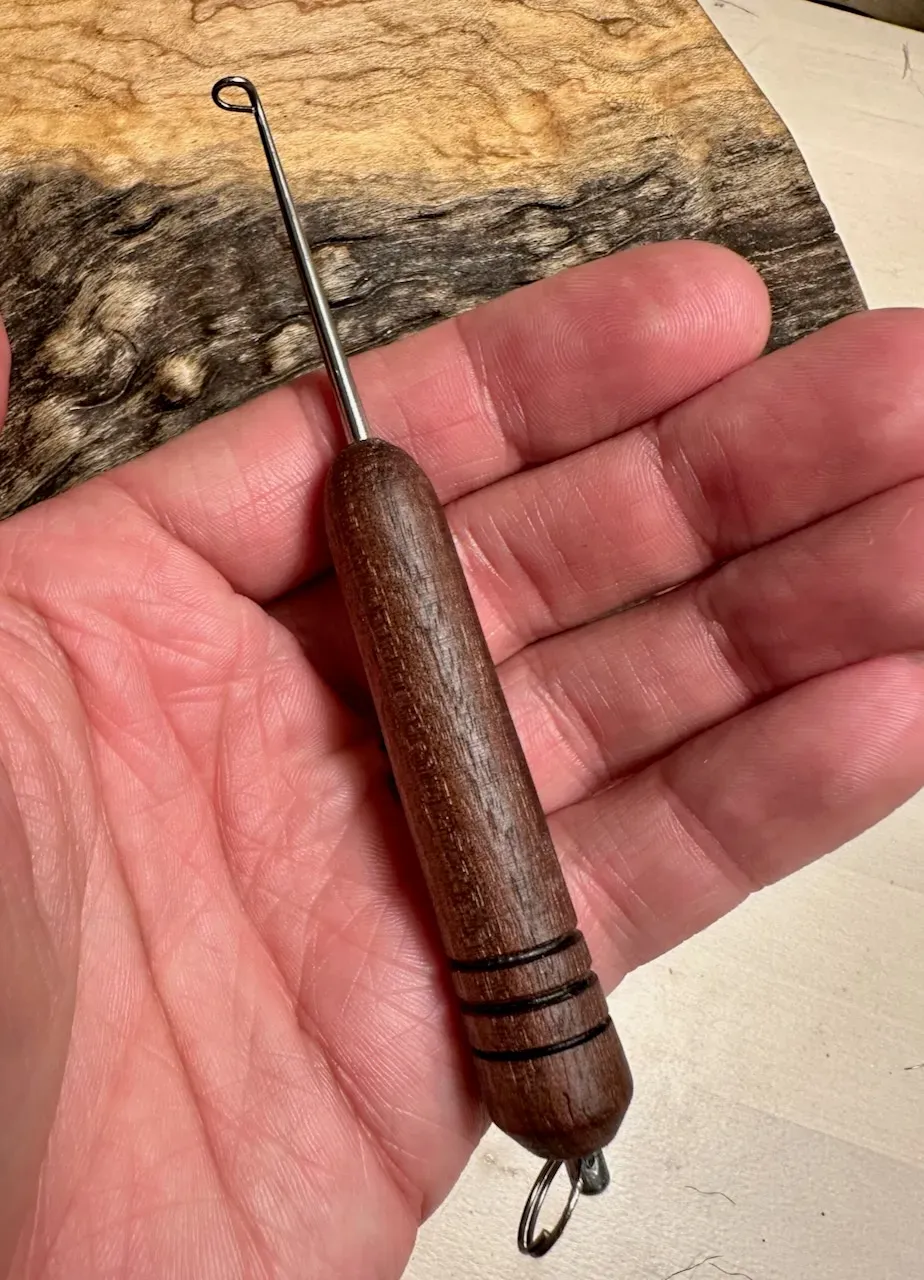
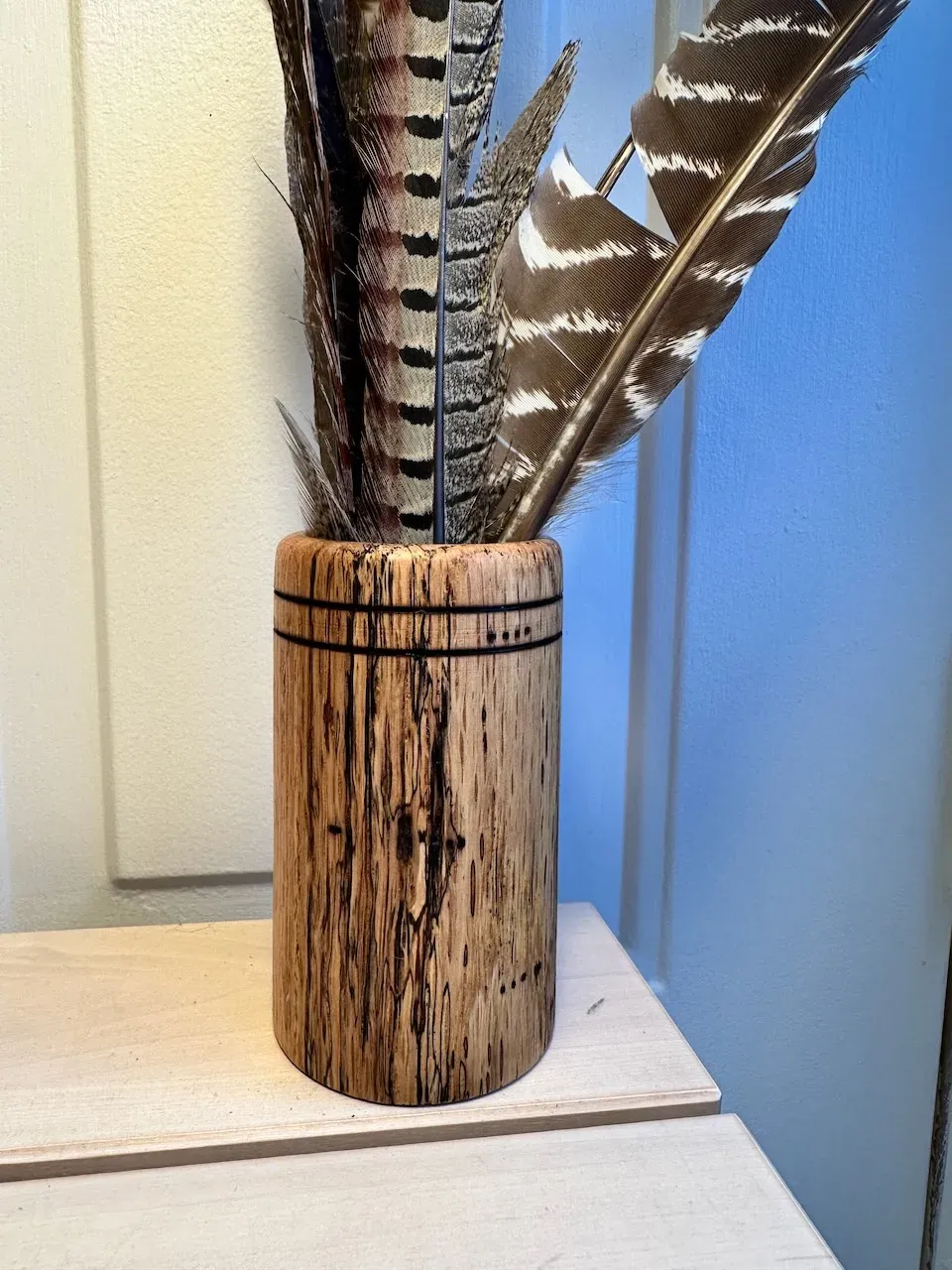
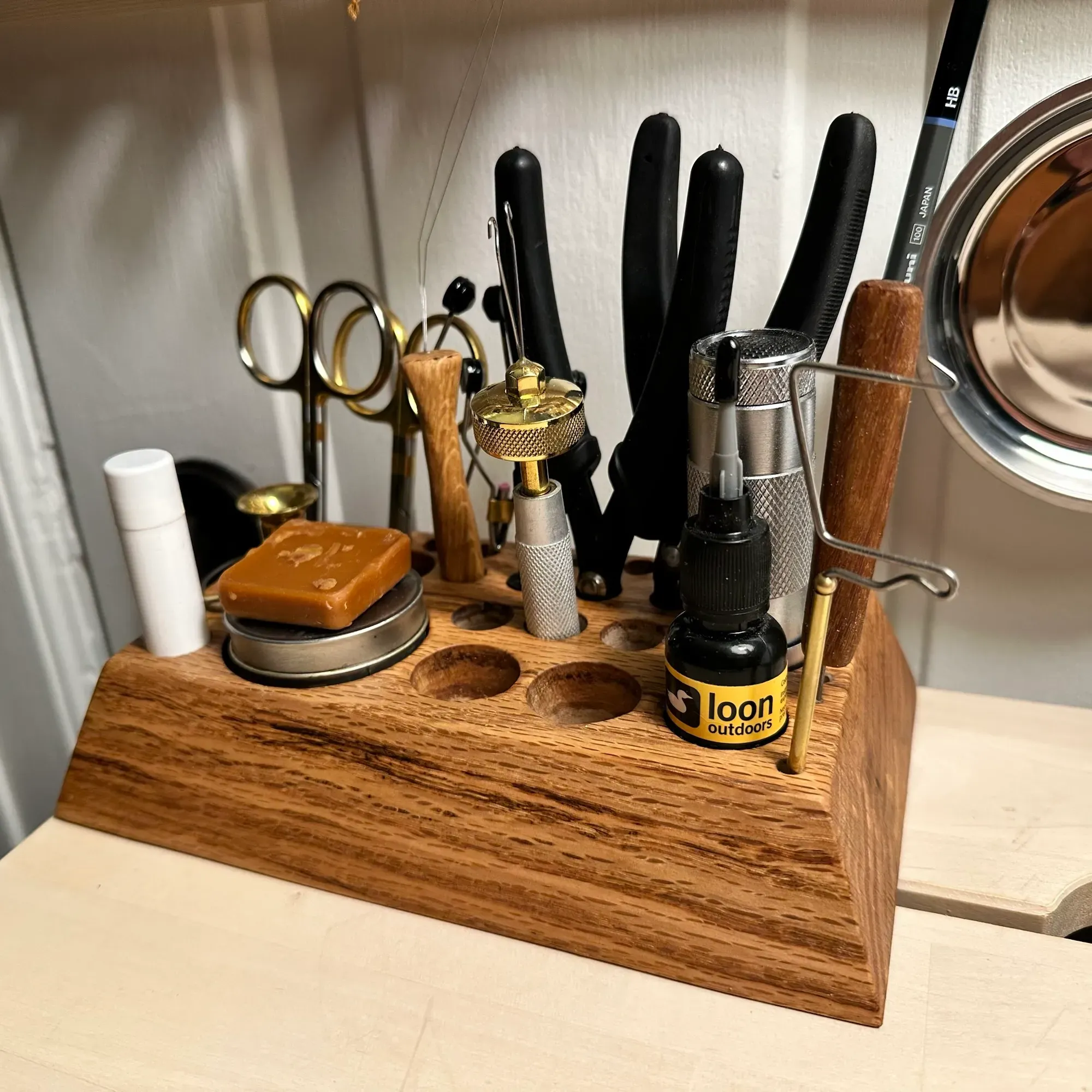
CFS: Yes, I think that that's what impressed me the most about that. Clearly it's a product of a more functional design, meaning, "Hey, here's the set of tools that I regularly use when I'm tying flies. So this tool caddy only needs to have these many slots." I think that's one of the biggest challenges with fly tying accessories in general is that there's no map. How many tools you need, where to put them, that stuff is only understood through experience. You need to tie a few hundred flies before you realize "I need my wire scissors here, I need my fine scissors, I'm gonna be grabbing my whip finisher every time, so that needs to be accessible." And if your Aunt Mabel gives you a tool caddy for Christmas when you're starting out, you're like "What do I do with this? Where does everything go?"
CG: One thing I want to make this winter is a net. Nets aren't insanely expensive. But there's a couple streams I fish around here where the biggest you're gonna catch most of the time is an eight or nine inch brown trout. It doesn't make sense to carry a huge net when you're gonna catch something small like that. I'd like to make a smaller net first. My uncle made a nice one for me, tamo-style net, which I really like. But sometimes I think I want something even smaller and more slim, especially when traveling. That one is made out of a grapevine, and it's got a natural bend in it, which is cool, but I can't pack it up and travel with it. It's mostly staying around here. So, I'd like something small. That I could pack down flat. to carry with me other places. So I think I'll try that out.
I also do boatbuilding, I build Adirondack guide boats, and I've built some kayaks. But I will say, that's an area where it's not yet really overlapped with my fishing. I don't fish out on the Hudson very much. I suppose I could fish the striper run, but tthat tends to be late April, early May around here, and honestly, that time of year, I don't really want to be out on the Hudson. It's windy, it's rainy, it's choppy, it's cold. I've thought about taking my gear out in the guide boat, but I honestly just don't really enjoy fishing from a boat. I like to wade. The two have not overlapped very much, even though there's a huge amount of potential there.
CFS: Yeah. And maybe, as your son gets older...
CG: Maybe we'll take that up into the Adirondacks and explore some, in the small lakes up there. Teach him to row. He likes to sit in the boat and move the oars. He's not quite coordinated enough or strong enough to pull them, but he really wants to, so I'm excited. I do have a tiny paddle for him that he can sit up in the bow and use. That's very cool.
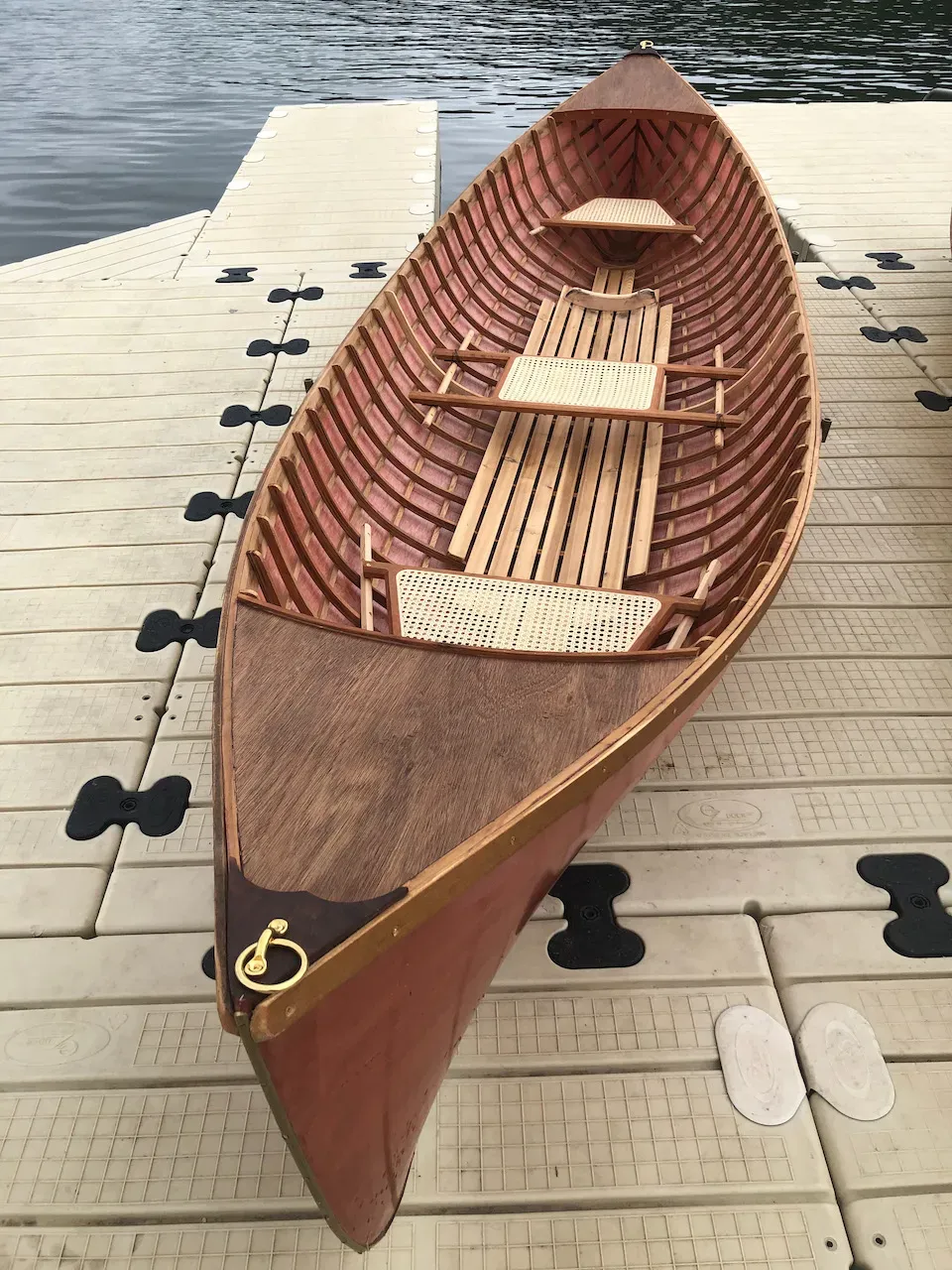
On making your own fly fishing tools
CG: Something that ties it all together is that I enjoy making things. I enjoy being outdoors. And wherever the two of those can overlap, that's right in my wheelhouse. But I'm not dogmatic about it. I would love to make my own rod out of bamboo someday, but I'm not there yet. I don't quite have that skill, or even the time. I know they do the courses over at the Catskill Fly Fishing Center. Maybe I'll take the week, two weeks it takes to go over there and make that, that'd be really great.
I enjoy making things. I enjoy being outdoors. And wherever the two of those can overlap, that's right in my wheelhouse.
I'm just starting to get a little bit into leather-working, so I've been making stuff for my wading belt to hold my net, to hold other gear. But if I feel like it's too tedious, or I don't have the skill level, or I don't want to take the time to make something, I'll still buy it. I have quite limited time these days.
CFS: Alright, so I have a theory, as we finish up, on some of the philosophy aspects of this. I have a theory that most fly anglers fall into one of two, sort of, paradigmatic ways of looking at the world. And this is very reductive, huge disclaimer. But there are either designers, who see things in a creative, puzzle-solving, no-finite-answer-to-everything way. And then there are engineering-minded anglers that are thinking about specific, rational, finite, like, solution-driven stuff. This is a largely result of me working with both designers and engineers and thinking about the different ways of approaching these fishing "problems". Where would you put yourself on that spectrum? Or do you think it's just a nonsense theory?
CG: I don't think it's a nonsense theory, I've run into this in other areas as well. I find that in some areas of my life, I'm very much of an engineering mindset. Especially at work. I have a background in mathematics. I approach things very systematically. And then there are other areas of my life where I just throw that to the wind. Cooking, for example. I'm almost guaranteed to not want to cook if I have to follow a recipe. I'm not trying to find the exact right amount of garlic. I just want to throw things together and make something that tastes good. Correct me if I'm wrong, but I think that would make me sort of fall a bit into the designer camp in that aspect.
With fishing, I'm not trying to maximize anything specific, besides enjoyment, and relaxation outside. I mean, I do really like I like catching fish. That's part of the point of it, right? But I tend to get quite pragmatic. I'm not trying to over-optimize. It's just, like, get me to the 80% solution. And let's go.
With fishing, I'm not trying to maximize anything specific, besides enjoyment, and relaxation outside.
I think it's probably not a one-size-fits-all. Like, if that were totally the case, I probably wouldn't have spent 10 hours making a nice base for my tying kit, but… I don't know, what do you think? Where would you place me in that?
CFS: It's one of those fun little thought experiments that proposes, like, an A or B situation, but there's no actual A or B answer. I would not have guessed that you had a background in mathematics, because feels like with your woodworking you're able to freeform from the shape of a given piece of wood into an outcome that is not necessarily predetermined. Those are aesthetic choices. "Oh, I'm gonna put a pyramid side on this tool caddy, not a straight side." or "This piece of wood is calling out to become my vice base." Your answer feels true to my experience, too. There are parts I really want to be organized, streamlined and efficient. But the reason I want those parts to be streamlined and efficient is so I don't have to be organized or efficient at all with other parts. Creating the boundaries to, let it all hang out in other things. I think that there's the magic, there's a necessary place of constraint and place of freedom.
CG: In my hobbies, if I need to be super precise, that takes a little bit of the fun out of it for me. I can be super precise at work, but in my personal life, I try to remove those constraints, and it's for the better. That's one of the reasons I like I've been doing skin-on-frame boat building, so you build the frame out of wood, in this case, mostly cedar, and with skin on frame building, it's quite forgiving. If you don't have the exact measurements, it's okay, the skin is still going to stretch over it. Whereas, if you are putting wood on the outside of the boat, you need to be quite precise, because even a small gap is noticeable. I like the speed and forgiveness of skin-on-frame, because we can just knock those out, and it's still gonna perform really nicely on the water. I'm not trying to race it. I'm not super competitive.
In my hobbies, if I need to be super precise, that takes a little bit of the fun out of it for me.
Book recommendations from Chuck
CFS: Alright, parting thoughts. Any good books you'd recommend? Anything you're reading right now that you feel like, is worth telling people about?
CG: Well, yeah, I'm enjoying this book that recently came out. Ed Van Put's A Flyfisher's Revelations. He passed away not too long ago, and this was published posthumously. It's quite good. He was one of the best modern fly-fishers in the Catskills, and he also worked for New York State Department of Conservation. So he would help stock the rivers and make sure they were healthy. And then he would also fish them at night.
What else? Oh, a book of short stories I just picked up, and I've read four or five in there. River Flowers by Robert Romano, Jr. Short stories about fishing for brook trout in Maine. I like digging up old books, and I came across this one in a local used bookstore, Good Fishing Close to New York City. I don't know if I recommend this one specifically, but in general I recommend going to your local bookstores and digging through old fly fishing books. When I picked it, I was like,"Oh, that's really interesting. On the front. There's a bunch of brook trout." Because there aren't many brook trout anywhere close to New York City. This book covers all of my local water, the small streams in the Croton Watershed, and it's got these really great hand-drawn maps.
The Croton Watershed TU Chapter has a stream guide. And it's got the same general maps, but they don't have all the old names of the various pools and the bends and the runs. But this book does. It was published in the '80s. One thing I noticed about one of the streams around here is that I've never caught anything bigger than maybe an eight-inch trout in there. And that's even on the big end. There are a lot of six to seven-inchers. And according to this book, even in the '80s that was exactly the case. It's still that way today.
They're just a small trout streams. All the bigger trout move back down into the reservoir. Only the young ones stay out. The state has tried different things to see if the fish will grow larger, but you just have to accept these are small fish streams, and fish them for what they are.
One of my favorites in the area is like that. No one else really goes to it. You have to drive by a couple other streams, and there's always 3-4 cars at every pull-out, and you see people. But where I go, only every third time do I see another person, and they're typically just walking past me. It's a couple miles stretch of river, deep in the woods, and I'm never jockeying for position.
𓆟 𓆝 𓆟
It was great to talk with Chuck about his fly fishing and fly tying woodworking projects, tenkara practice, current book lineup, and more. You can follow along as he blogs about his projects at cagrimmett.com. Our conversation was truncated and edited for clarity, and all the images are courtesy Chuck (what can't this guy do, amirite?!).
If you've got a project or area of practice you think other anglers would like to hear about, get in touch. I'd love to share what you're working on to help inspire other anglers to explore new areas of creativity.
𓆟 𓆝 𓆟

